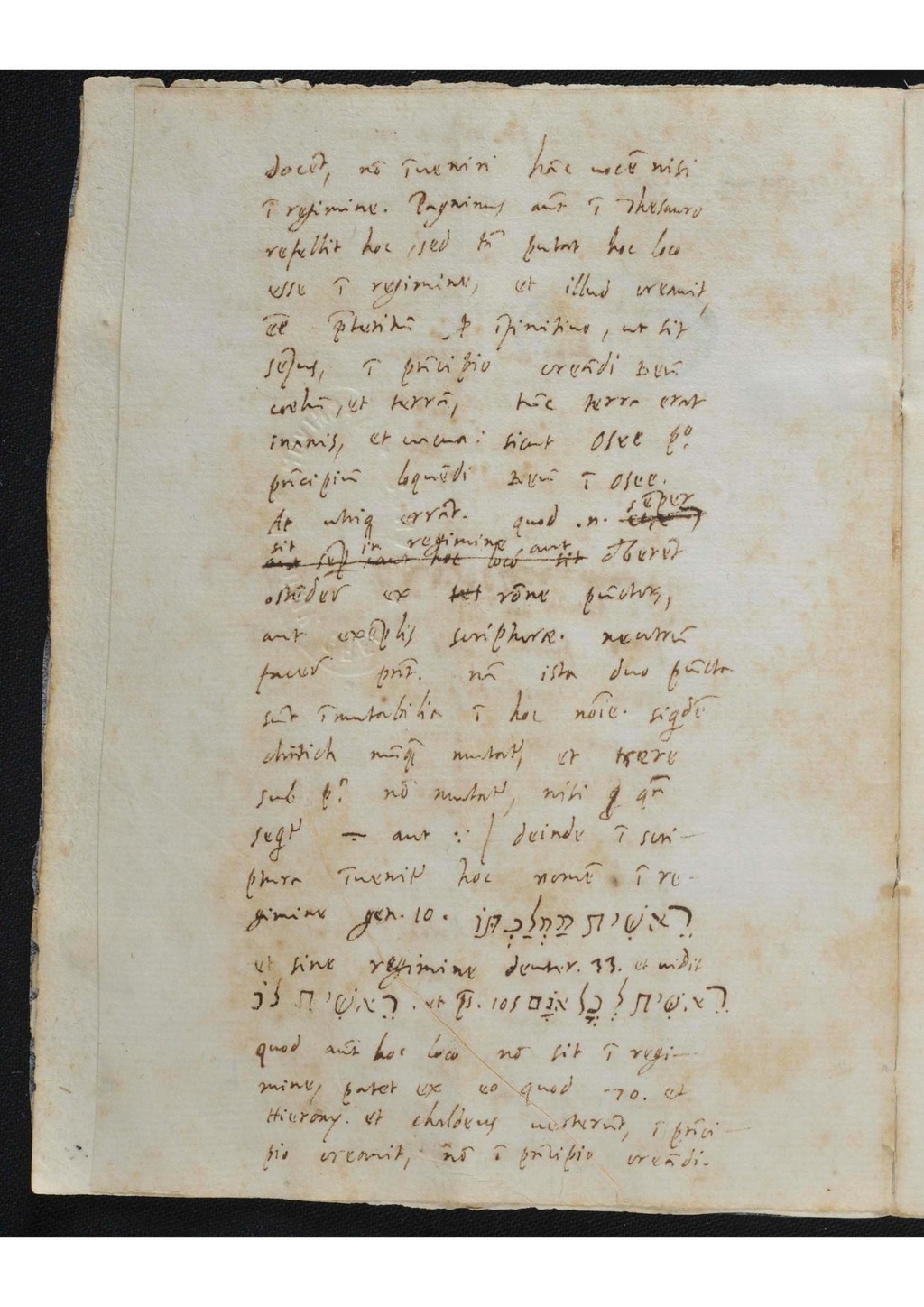docent, non inveniri hanc vocem nisi
in regimine. Pagninus autem in thesauro
refellit hoc, sed tamen putat hoc loco
esse in regimine, et illud creavit,
esse praeteritum pro infinitivo, ut sit
sensus, in principio creandi Deum
caelum, et terram Cite error: Closing </ref> missing for <ref> tag.
At utrique errant, quod enim ? semper
sit in regimine aut deberent
aut semper aut hoc loco sit
ostendere ex tes ratione punctorum,
aut exemplis scripturae. neutrum
facere possunt. nam ista duo puncta
sunt immutabilia in hoc nomine. siquidem
chirich numquam mutatur et tzere
sub p° non mutatur, nisi q quando
sequitur ָ aut ֶ [1]/ deinde in scri
ptura invenitur hoc nomen in re
gimine gen 10[2] רֵאשִׁ֤ית מַמְלַכְתּוֹ֙
et sine regimine deuter 33[3] et vidit
רֵאשִׁ֤ית לֹו et ps. 105[4] רֵאשִׁ֤ית לְכָל־אוֹנָֽם
quod autem hoc loco non sit in regi
mine, patet ex eo quod 70[5] et
Hieronymus[6] et chaldeus[7] verterunt in princi
pio creavit, non in principio creandi.
- ↑ Bellarminus, Institutiones linguae Hebraicae, 49.
- ↑ Gen 10,10.
- ↑ Deut 33,21.
- ↑ Psalm 105,36.
- ↑ in the ms. used to indicate the Septuagint.
- ↑ The Vulgata- latin rendering of the Bible, as printed in the Biblia regia, a polyglot version of the Bible in 5 languages printed in Antwerp between 1569 and 1572 by Christopher Plantin. The Biblia regia is used by Bellarmine for comparing the hebrew, aramaic, greek and latin renderings of Scripture, referring to the various renderings in different ways (70 / graeca; Vulgata /nostra editione/ Hieronymus).
- ↑ The targum i.e. the aramaic rendition of the hebrew text.
